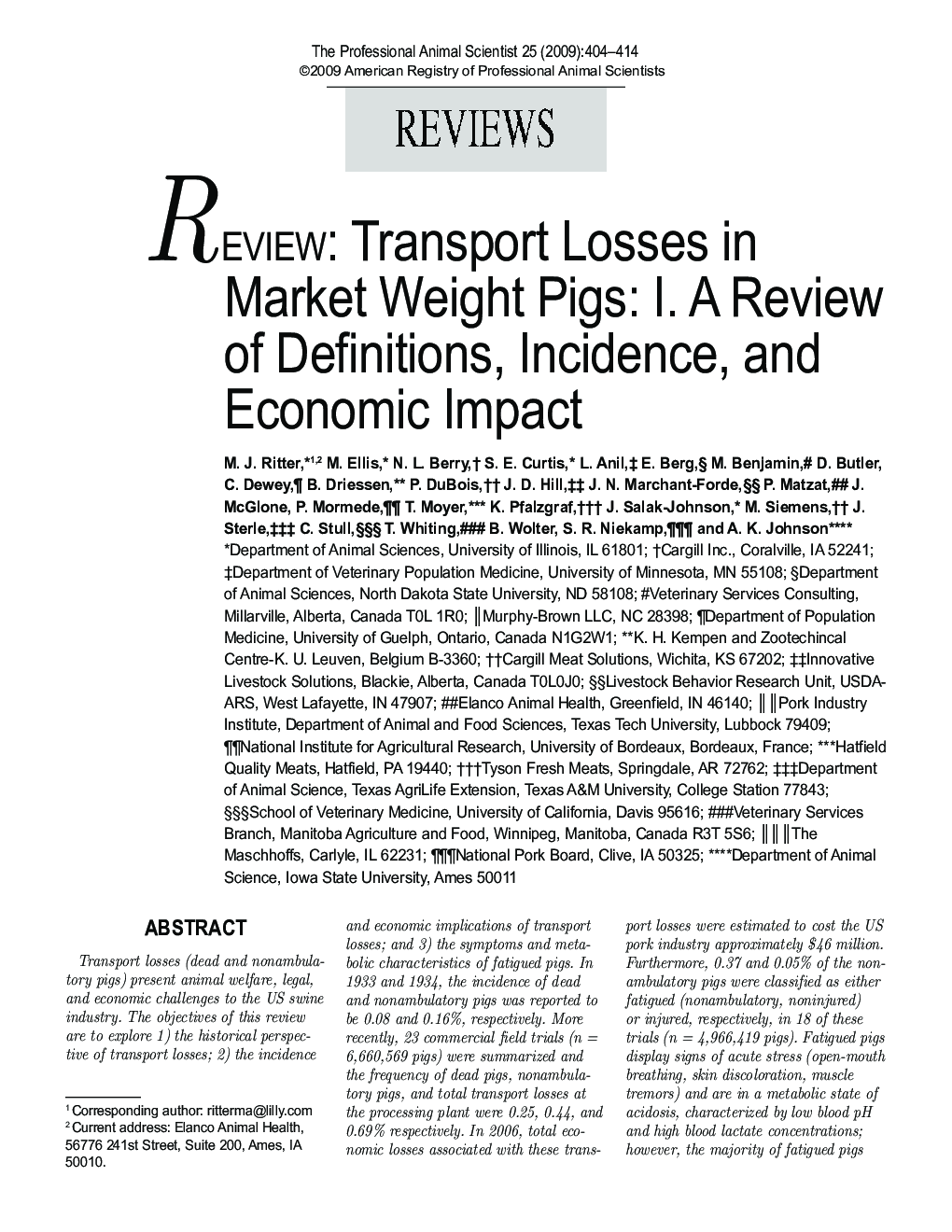| Article ID | Journal | Published Year | Pages | File Type |
|---|---|---|---|---|
| 2454179 | The Professional Animal Scientist | 2009 | 11 Pages |
Abstract
Transport losses (dead and nonambulatory pigs) present animal welfare, legal, and economic challenges to the US swine industry. The objectives of this review are to explore 1) the historical perspective of transport losses; 2) the incidence and economic implications of transport losses; and 3) the symptoms and metabolic characteristics of fatigued pigs. In 1933 and 1934, the incidence of dead and nonambulatory pigs was reported to be 0.08 and 0.16%, respectively. More recently, 23 commercial field trials (n = 6,660,569 pigs) were summarized and the frequency of dead pigs, nonambulatory pigs, and total transport losses at the processing plant were 0.25, 0.44, and 0.69% respectively. In 2006, total economic losses associated with these transport losses were estimated to cost the US pork industry approximately $46 million. Furthermore, 0.37 and 0.05% of the nonambulatory pigs were classified as either fatigued (nonambulatory, noninjured) or injured, respectively, in 18 of these trials (n = 4,966,419 pigs). Fatigued pigs display signs of acute stress (open-mouth breathing, skin discoloration, muscle tremors) and are in a metabolic state of acidosis, characterized by low blood pH and high blood lactate concentrations; however, the majority of fatigued pigs will recover with rest. Transport losses are a multifactorial problem consisting of people, pig, facility design, management, transportation, processing plant, and environmental factors, and, because of these multiple factors, continued research efforts are needed to understand how each of the factors and the relationships among factors affect the well-being of the pig during the marketing process.
Related Topics
Life Sciences
Agricultural and Biological Sciences
Animal Science and Zoology
Authors
M.J. Ritter, M. Ellis, N.L. Berry, S.E. Curtis, L. Anil, E. Berg, M. Benjamin, D. Butler, C. Dewey, B. Driessen, P. DuBois, J.D. Hill, J.N. Marchant-Forde, P. Matzat, J. McGlone, P. Mormede, T. Moyer, K. Pfalzgraf, A.K. Johnson,
